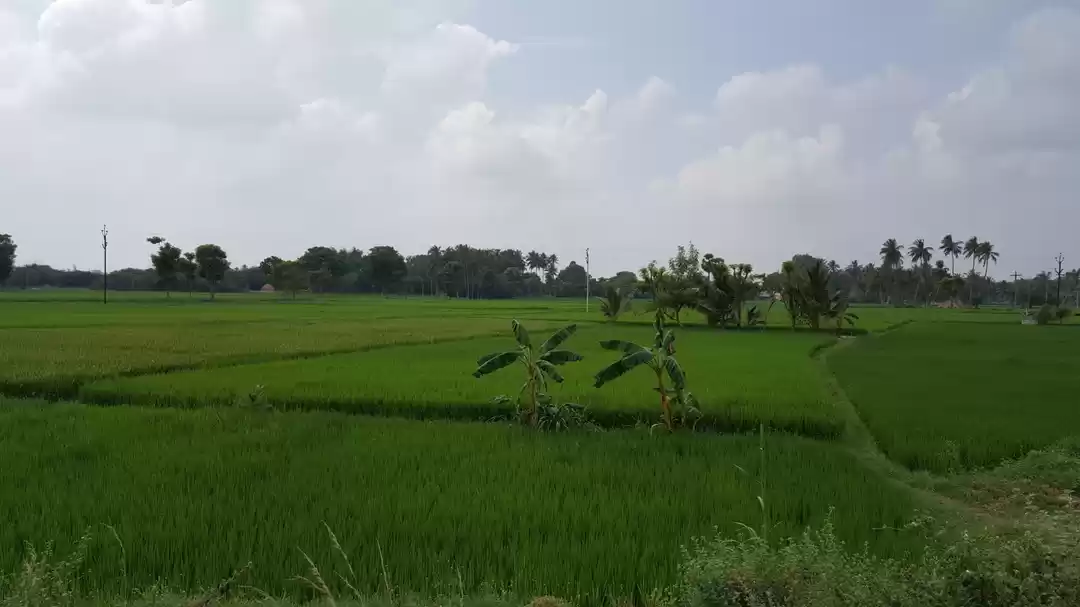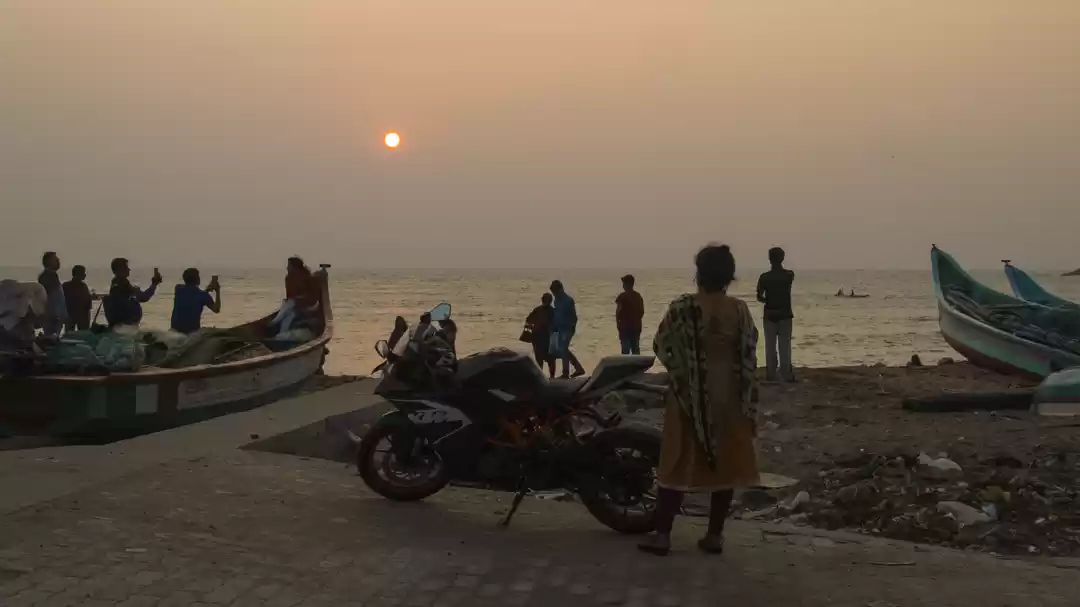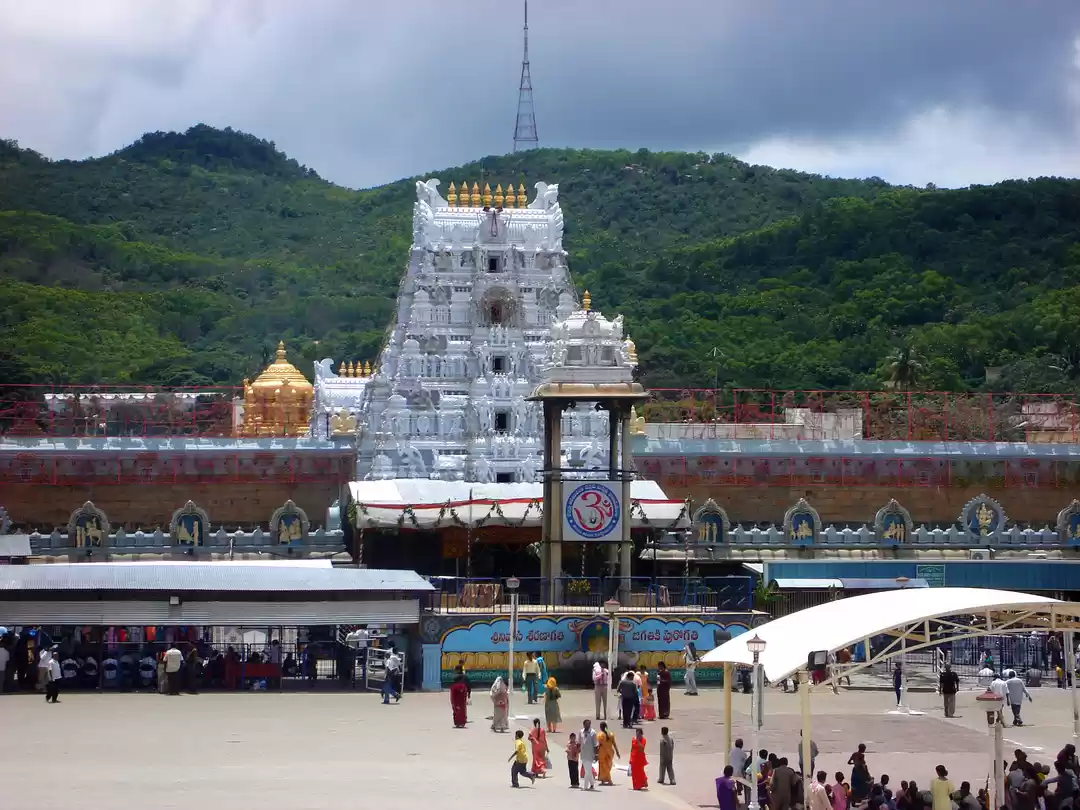Are you looking for a spiritual and cultural destination that will take you back in time and awe you with its beauty and history? If yes, then you should visit the Karpaka Vinayakar Temple, a stunning rock-cut cave temple dedicated to Lord Ganesha, the elephant-headed god of wisdom and prosperity. Located in the Chettinad region of Tamil Nadu, this temple is one of the oldest and most revered Ganesha temples in India, dating back to the 4th century AD. In this article, we will tell you everything you need to know about this temple, its history, architecture, significance, festivals, and how to reach and visit it. Read on to discover the wonders of this ancient temple and plan your trip to this divine destination.

History and Origin of the Temple
The name Karpaka Vinayakar means “the wish-fulfilling Ganesha”, as it is believed that the deity grants the desires of his devotees. The temple is also known as Pillayarpatti Temple, after the village where it is located, or Pillaiyarpatti Pillaiyar Temple, after the Tamil name for Ganesha. The temple is one of the oldest rock-cut cave temples in South India, carved out of a hill by the early Pandya kings in the 4th century AD. The temple has several inscriptions in Tamil Brahmi script, which are among the earliest examples of Tamil writing. The inscriptions mention the names of the kings, the donations made by them, and the festivals celebrated in the temple.
The temple has some unique features that distinguish it from other Ganesha temples. The main deity, Karpaka Vinayakar, is a rare two-handed image of Ganesha, holding a modak (sweet) in his right hand and a lotus in his left hand. The image is carved out of a large block of black stone, measuring about 6 feet in height and 5 feet in width. The image faces north, which is considered auspicious for Ganesha. Another remarkable feature of the temple is the sculpture of a cow worshipping a Shiva lingam, which is said to be the only one of its kind in the world. The sculpture depicts the legend of Kamadhenu, the divine cow, who prayed to Shiva in this cave to protect her from a sage’s curse. The temple also has a rare shrine where three Shiva lingams and three goddesses - Parvati, Lakshmi, and Saraswati - are worshipped together.
Architecture and Design of the Temple
The temple is a splendid example of rock-cut cave architecture, which was prevalent in South India from the 3rd to the 9th century AD. The temple is carved out of a single rock, measuring about 150 feet in length and 30 feet in height. The temple has a simple and elegant design, with a gopuram (tower) at the entrance, a mandapam (hall) with pillars and sculptures, and a garbhagriha (sanctum) with the main deity. The temple also has a salas (shrine) for the three lingams and the three goddesses, and a temple tank called Karpaka Theertham, where devotees take a holy dip before entering the temple.
The temple is adorned with exquisite carvings, paintings, and sculptures, depicting various gods, goddesses, and mythical creatures. The temple walls are decorated with colourful murals, depicting scenes from the Ramayana, the Mahabharata, and the Puranas. The temple pillars are carved with intricate motifs, such as lotuses, elephants, lions, and peacocks. The temple sculptures are made of granite, sandstone, and marble, and showcase the skill and craftsmanship of the ancient sculptors. Some of the notable sculptures are the Nataraja (dancing Shiva), the Ardhanarishvara (half-male half-female Shiva), the Ashtalakshmi (eight forms of Lakshmi), and the Navagraha (nine planets).
Significance and Spirituality of the Temple
The temple is a sacred and powerful place, where devotees come to seek the blessings of Lord Ganesha, the remover of obstacles and the bestower of wisdom and prosperity. The temple is especially famous for its efficacy in solving the problems of women with sevvai dosham, a planetary affliction in astrology that causes delays or difficulties in marriage. It is believed that worshipping Karpaka Vinayakar can remove this dosham and ensure a happy and harmonious married life. Many women come to this temple to offer prayers and perform rituals, such as the Ganapati Homam (fire sacrifice) and the Kalyana Utsavam (wedding ceremony), to appease Ganesha and find their suitable match.
The temple is also a place where devotees can worship other deities, such as Shiva, Parvati, Lakshmi, Saraswati, Durga, and Kubera, and receive their grace and guidance. The temple is a rare example of a Shaiva-Vaishnava-Shakta temple, where the three main sects of Hinduism are represented and revered. The temple is also a place where devotees can learn and appreciate the rich and diverse culture and heritage of Tamil Nadu, as the temple reflects the history, art, and literature of the region.
Festivals and Celebrations of the Temple
The temple is a hub of festive and cultural activities, especially during the major festivals celebrated in the temple. The most important festival is the Vinayaka Chaturthi, the birthday of Ganesha, which falls in the month of August or September. The festival is celebrated with great pomp and fervour, with thousands of devotees thronging the temple to offer their prayers and offerings to Ganesha. The highlight of the festival is the grand procession of the deity on a silver chariot, accompanied by music and dance. The festival lasts for 10 days, and culminates with the immersion of the Ganesha idols in the nearby river.
Another significant festival is the Brahmothsavam, the annual festival of the temple, which falls in the month of September or October. The festival is celebrated for 15 days, and involves various rituals and ceremonies, such as the flag hoisting, the abhishekam (bathing of the deity), the alankaram (decoration of the deity), the arati (waving of lamps), and the prasadam (offering of food). The festival also features cultural programs, such as the Bharatanatyam (classical dance), the Nadaswaram (pipe music), and the Harikatha (storytelling). The festival ends with the car festival, where the deity is taken around the village on a wooden car, followed by a huge crowd of devotees.
Some of the other festivals and occasions that are observed in the temple are the monthly and weekly pujas, the new moon and full moon days, and the auspicious days for Ganesha, such as the Sankatahara Chaturthi (the fourth day after the full moon) and the Ganesh Jayanti (the fourth day after the new moon).

How to Reach and Visit the Temple
The temple is located in the village of Pillayarpatti, which is about 12 km from Karaikudi, the nearest town. The temple is easily accessible by road, as it is situated on the Karaikudi-Madurai highway. The temple is about 90 km from Madurai, the nearest city, and 400 km from Chennai, the state capital. The temple can be reached by bus, taxi, or auto-rickshaw from Karaikudi, Madurai, or Chennai. The nearest railway station is Karaikudi Junction, which is well-connected to other major cities in Tamil Nadu and India. The nearest airport is Madurai Airport, which has domestic flights to and from Chennai, Bangalore, Mumbai, and Delhi.
The temple is open from 6 am to 1 pm and from 4 pm to 8.30 pm on all days of the week. The entry to the temple is free, but there are nominal charges for special pujas and darshans. The temple has a dress code and etiquette that the visitors are expected to follow, such as wearing modest and traditional clothes, removing footwear outside the temple, maintaining silence and cleanliness, and respecting the customs and beliefs of the temple.
The best time to visit the temple is during the festivals, when the temple is decorated and illuminated, and the atmosphere is vibrant and festive. However, the temple can be visited at any time of the year, as the weather and climate of the region are pleasant and moderate throughout the year. The average temperature ranges from 20°C to 35°C, and the average rainfall is about 900 mm per year.
The temple is also a good base to explore the other attractions and places of interest in and around the Chettinad region, which is known for its rich and distinctive culture, cuisine, and architecture. Some of the places to visit near the temple are:
Chettinad Palace: A majestic and magnificent mansion built by the Chettiar community, a wealthy and influential merchant class, in the 19th century. The palace is a marvel of architecture and design, with intricate woodwork, stained glass windows, Italian marble, Belgian chandeliers, and Burmese teak. The palace is also a museum, displaying the artifacts, antiques, and paintings collected by the Chettiars from various countries and cultures.
Chettinad Museum: A private museum that showcases the lifestyle, culture, and heritage of the Chettiar community. The museum has a collection of traditional and rare items, such as jewellery, clothing, utensils, furniture, and musical instruments. The museum also has a library, a photo gallery, and a souvenir shop.
Athangudi: A village famous for its handmade and colourful tiles, known as Athangudi tiles. The tiles are made of local sand, cement, and synthetic oxides, and are decorated with floral, geometric, and ethnic patterns. The tiles are used to adorn the floors, walls, and ceilings of the Chettinad houses and buildings. The village also has a tile factory, where visitors can see the process of making and drying the tiles.
Kandanur: A village known for its ancient and beautiful temple, dedicated to Shiva. The temple is called the Sri Kandeeswarar Temple, and is also known as the Dakshin Kailasam, meaning the southern abode of Shiva. The temple is built in the Dravidian style of architecture, and has a five-tiered gopuram, a spacious mandapam, and a huge Nandi (bull) statue. The temple is famous for its sculptures, paintings, and inscriptions, depicting various aspects of Shiva and his consort Parvati.
Karaikudi: The largest town in the Chettinad region, and the administrative headquarters of the Sivaganga district. The town is a hub of commerce, education, and tourism, and has many attractions and facilities for the visitors. Some of the places to visit in Karaikudi are the Karaikudi Market, a bustling and colourful market that sells a variety of goods, such as spices, fruits, vegetables, flowers, and handicrafts, the Karaikudi Heritage Walk, a guided tour that takes the visitors through the streets and lanes of the town, showcasing the architecture, culture, and history of the Chettinad houses and buildings, and the Karaikudi Food Festival, a gastronomic event that offers a taste of the authentic and delicious Chettinad cuisine, which is famous for its spicy and aromatic dishes, such as the chicken chettinad, the mutton kuzhambu, and the vellai paniyaram.
Conclusion
The Karpaka Vinayakar Temple is a must-visit destination for anyone who wants to experience the spirituality, culture, and heritage of Tamil Nadu. The temple is a treasure trove of history, art, and architecture, and a place where devotees can seek the blessings of Lord Ganesha and other deities. The temple is also a gateway to explore the other attractions and places of interest in the Chettinad region, which is known for its rich and distinctive culture, cuisine, and architecture.
If you are planning to visit this temple, make sure to book your tickets and accommodation in advance, as the temple is very popular and crowded during the festivals and peak seasons.
























